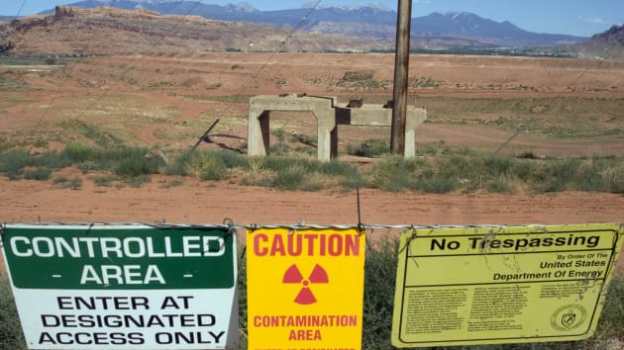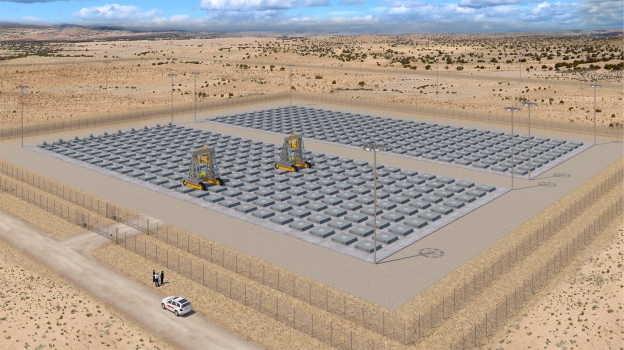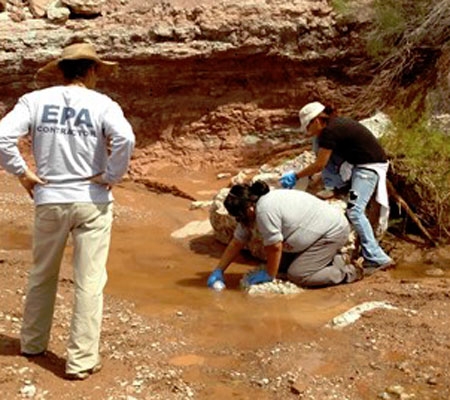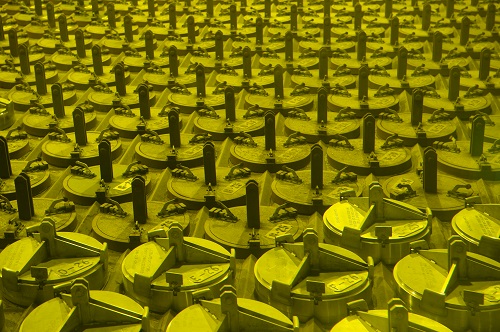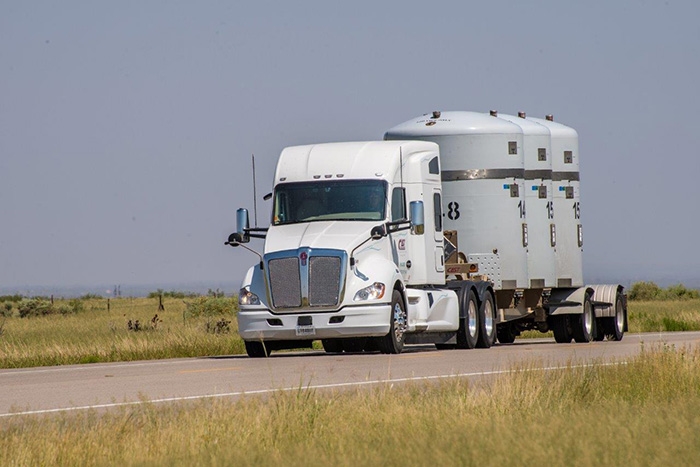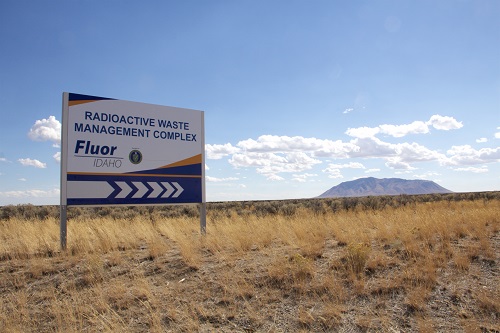In documents filed Wednesday (Jan. 2, 2012) with the Nuclear Regulatory Commission (NRC), a wide range of national and grassroots environmental groups said it would be impossible for the NRC to adequately conduct a court-ordered assessment of the environmental implications of long-term storage of spent nuclear reactor fuel in the two short years the federal agency envisions for the process.
In June 2012, the U.S. Court of Appeals for the D.C. Circuit vacated the NRC’s 2010 Waste Confidence Decision and Temporary Storage Rule and remanded them to the agency for study of the environmental impacts of storing spent fuel indefinitely if no permanent nuclear waste repository is licensed or if licensing of a repository is substantially delayed. Spent nuclear fuel remains highly dangerous for prolonged periods. It has long-lived radioactive materials in it that can seriously contaminate the environment and harm public health if released. Additionally, spent nuclear fuel contains plutonium-239, a radiotoxic element that can be used to make nuclear weapons if separated from the other materials in the fuel. Plutonium-239 has a half-life of over 24,000 years.
In their filings, the 24 groups said a full review of the three issues outlined in June 2012 by the U.S. Court of Appeals for the D.C. Circuit – long-term storage risks for spent nuclear fuel, spent fuel pool fire risks, and spent fuel pool leakage risks – would take at least the seven years originally projected by the NRC staff, and likely considerably longer. Current federal law requires that the NRC conduct a comprehensive environmental impact statement (EIS) study before issuing a revised Waste Confidence Decision; the 24 groups submitted their comments about the appropriate “scoping” of the EIS.
In the absence of an adequate EIS review, the NRC has “no choice but to continue to suspend all licensing and re-licensing actions” for U.S. nuclear reactors, according to the 24 organizations. All licensing and re-licensing actions were previously suspended by the NRC until an EIS and revised Waste Confidence Decision have been issued. The 24 groups jointly filing the comments today with the NRC are the Alliance for Nuclear Accountability, Beyond Nuclear, Blue Ridge Environmental Defense League, Center for a Sustainable Coast, Citizens Allied for Safe Energy, Citizens Environmental Alliance, Don’t Waste Michigan, Ecology Party of Florida, Friends of the Earth, Georgia Women’s Action for New Directions, Hudson River Sloop Clearwater, Missouri Coalition for the Environment, New England Coalition, Nevada Nuclear Waste Task Force, NC WARN, Nuclear Information and Resource Service, Nuclear Watch South, Physicians for Social Responsibility, Public Citizen, Riverkeeper, San Luis Obispo Mothers for Peace, SEED Coalition, Sierra Club Nuclear Free Campaign, and Southern Alliance for Clean Energy.
The expert declarations were made by: Dr. Arjun Makhijani, president of the Institute for Energy and Environmental Research; Dr. Gordon Thompson, executive director for the Institute for Resource and Security Studies; and Phillip Musegaas, Esq., Hudson River program director for Riverkeeper, Inc.
Highlights of the 24-group filings include the following:
•The “hurry-up” two-year timeframe for environmental review falls far short of the 2019 estimate of NRC’s own technical staff for data collecting and analysis on the impacts of long-term storage of spent nuclear fuel. The NRC currently lacks sufficient information to reach scientifically, well-founded conclusions about the impacts of such storage. The agency also lacks information regarding the impacts associated with the eventual disposal of spent nuclear fuel. According to Dr. Makhijani, the NRC will not be able to gather this information within its truncated, self-imposed two-year timeframe.
•The short timeframe provided for environmental review will also not permit post-Fukushima information about U.S. reactors to be fully collected and evaluated. Under the schedule established by the NRC staff in March 2012, reactor licensees are not due to supply post-Fukushima seismic information until September 2013 for reactor sites in the eastern and central U.S. and March 2015 for western reactor sites. According to the groups’ filing with the NRC today: “Given the significant role played by seismic events in accidents ranging from spent fuel pool leaks to pool fires and their potential effects on long-term storage sites, this information is crucial to the NRC’s ability to take a ‘hard look’ at all three topics remanded by the Court.”
•Despite the Court’s order to consider impacts associated with the failure to ever establish a permanent repository for spent nuclear fuel, the NRC proposed only to consider the impacts associated with failing to secure a repository by the end of this century. Dr. Makhijani and Dr. Thompson argue that the NRC should consider the environmental impacts of failing to establish a repository until 2250, requiring approximately 300 years of onsite storage.
•The NRC should consider alternatives to minimize the risks of storage of spent nuclear fuel and high level waste, including placement below ground level, elimination of the current practice of high-density storage of spent fuel in pools, and more robust designs for storage casks.
•The environmental impact statement should assess the radiological risk arising from a range of conventional accidents or attacks, including those conducted by terrorists.
24 Groups: NRC Rushing Nuclear “Waste Confidence” Process, Not Satisfying Court-Ordered Requirements, PRNewswire, Jan. 3, 2013
